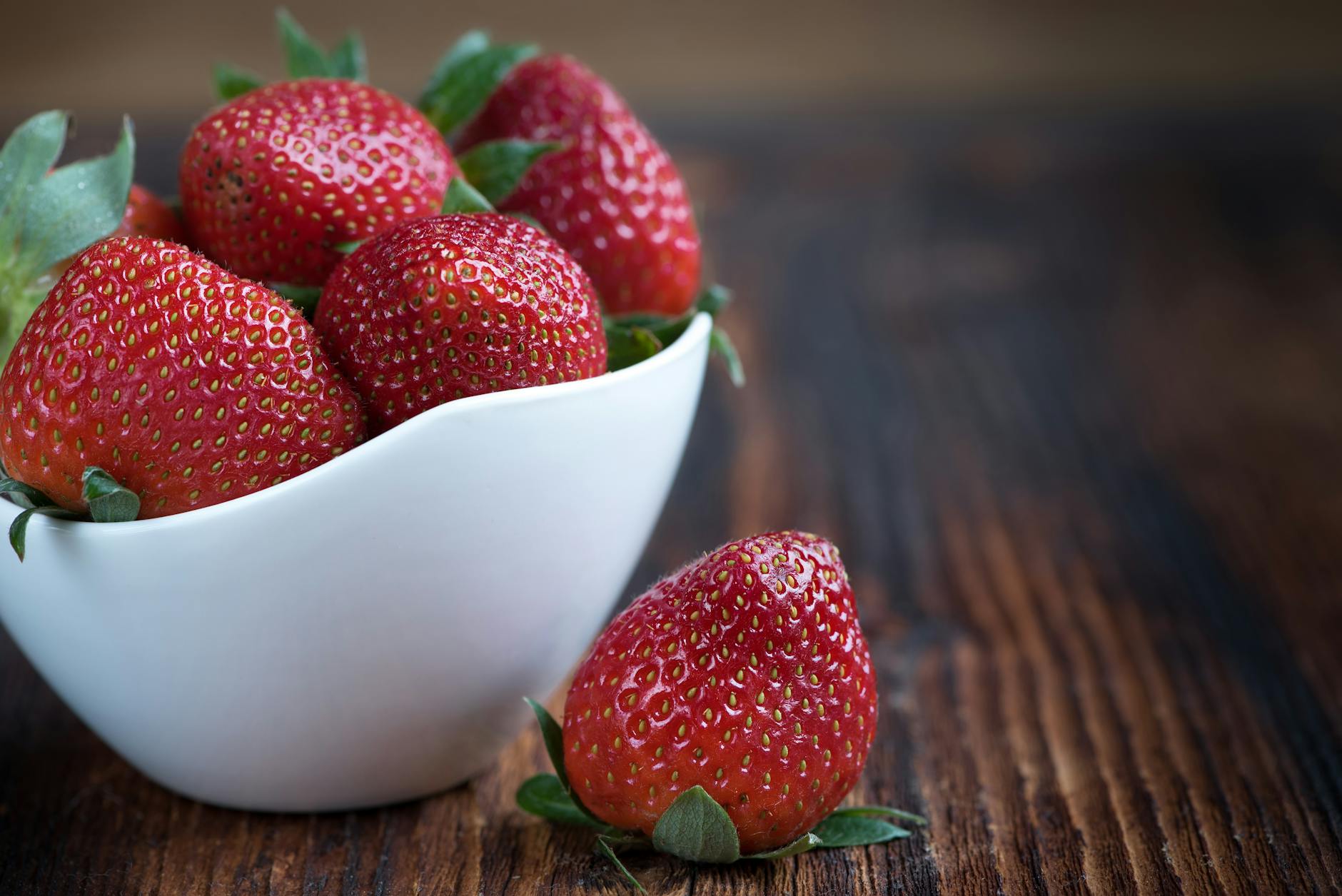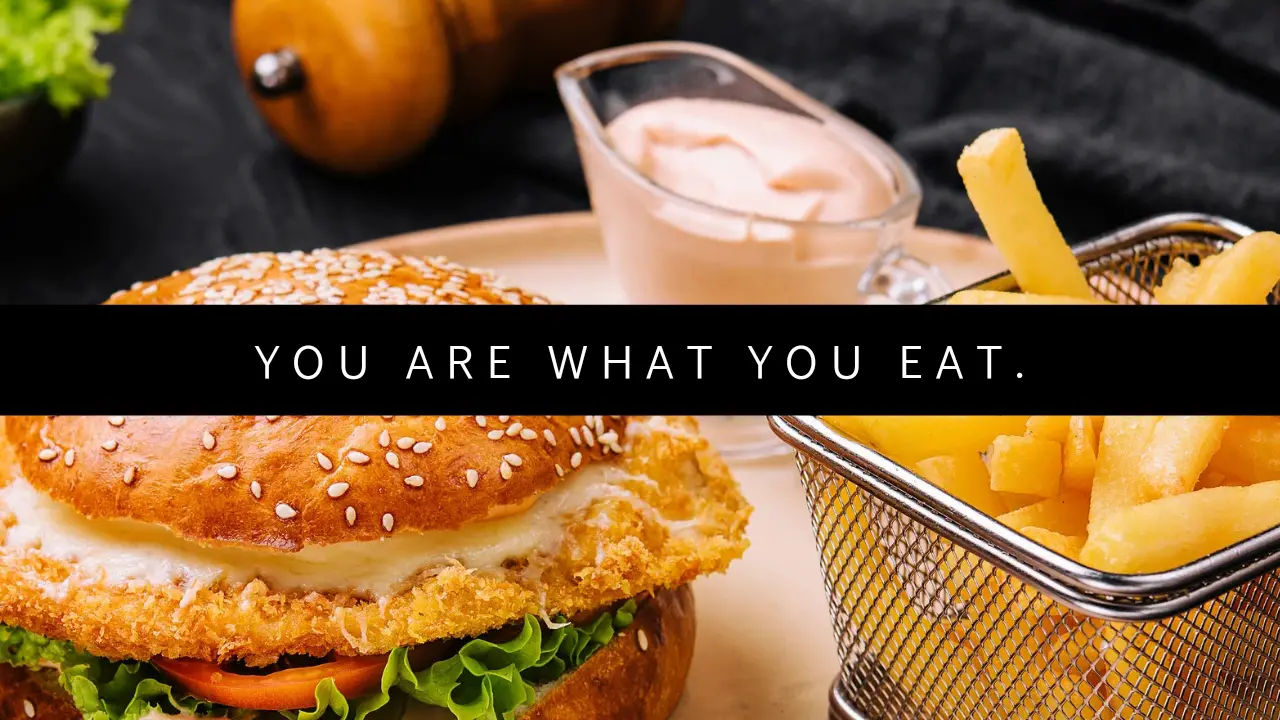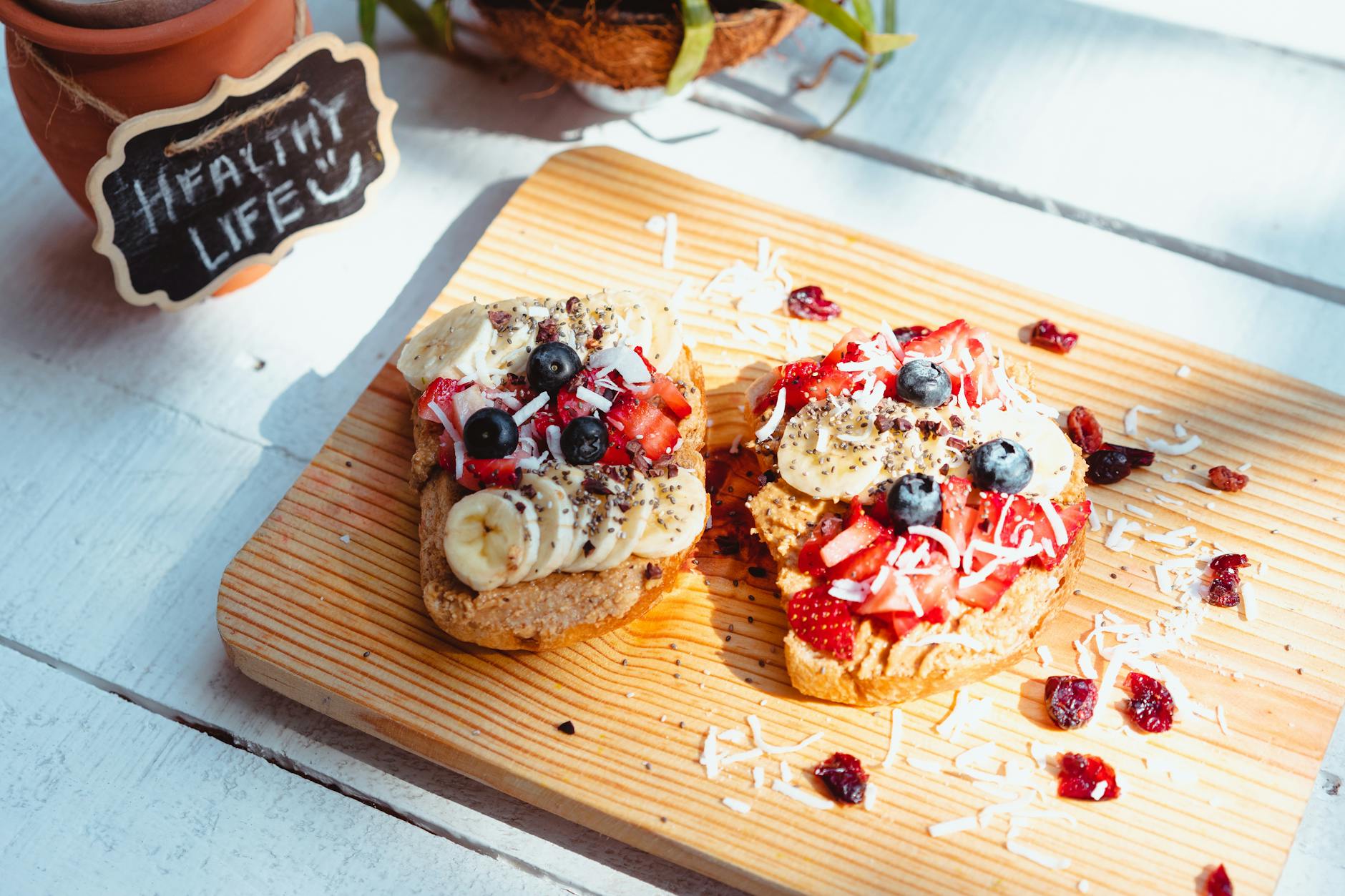As you enter your 30s, focusing on nutrients like calcium, vitamin D, iron, and omega-3 fatty acids becomes increasingly important for bone health, muscle strength, energy levels, and overall well-being.
Why do you need more calcium in your 30s
In your 30s, bone density begins to decrease gradually, so ensuring an adequate intake of calcium becomes crucial to maintain strong bones and prevent conditions like osteoporosis later in life. Calcium is essential for bone health, muscle function, nerve transmission, and blood clotting.
Sources of calcium
Good sources of calcium include dairy products like milk, yogurt, and cheese, as well as fortified plant-based milk alternatives like almond milk or soy milk. Other sources include leafy greens such as kale and broccoli, fortified cereals, tofu, almonds, and sardines with bones.
How to maximise calcium absorption
To maximize calcium absorption, consider these tips:
Vitamin D: Ensure adequate intake of vitamin D, which helps the body absorb calcium. Sources include sunlight exposure, fatty fish like salmon, fortified foods, and supplements if needed.
Spread Intake: Instead of consuming a large amount of calcium all at once, spread it throughout the day to enhance absorption.
Calcium-Rich Foods: Consume calcium-rich foods alongside foods containing vitamin C, ascorbic acid, and protein, as these can enhance calcium absorption.
Moderate Caffeine and Alcohol: High intake of caffeine and alcohol can interfere with calcium absorption, so moderate your consumption.
Calcium Supplements: If you struggle to meet your calcium needs through diet alone, consider taking calcium supplements, but always consult with a healthcare professional first to determine the appropriate dosage and type for your needs.
Why you need vitamin D in your 30s!
Vitamin D is essential in your 30s for several reasons:
Bone Health: It aids in calcium absorption, crucial for maintaining bone density and reducing the risk of osteoporosis.
Muscle Function: Vitamin D supports muscle strength and function, which is important for overall mobility and injury prevention.
Immune System: It plays a role in supporting a healthy immune system, helping the body fight off infections and illnesses.
Mood Regulation: Adequate vitamin D levels are associated with better mood regulation and may help reduce the risk of depression and anxiety.
Heart Health: Some research suggests that vitamin D may have a protective effect on the cardiovascular system, potentially lowering the risk of heart disease.
Pregnancy Support: For individuals planning to start a family, adequate vitamin D levels are important for fertility and a healthy pregnancy.
What are the sources of vitamin D?
The primary sources of vitamin D include:
Sunlight: Your skin produces vitamin D when exposed to sunlight. Aim for moderate sun exposure, typically 10-30 minutes a few times a week, depending on factors like skin tone, time of day, and location.
Fatty Fish: Fatty fish like salmon, trout, mackerel, and tuna are excellent sources of vitamin D.
Fortified Foods: Many foods are fortified with vitamin D, including cow’s milk, plant-based milk alternatives, orange juice, cereal, and some yogurts.
Egg Yolks: Egg yolks contain small amounts of vitamin D.
Mushrooms: Some types of mushrooms, particularly those exposed to UV light during growth, can provide vitamin D.
Supplements: If you have limited sun exposure or struggle to get enough vitamin D through diet alone, supplements are available. It’s best to consult with a healthcare professional to determine the appropriate dosage for your needs.
How to maximise absorption of vitamin D.
To maximize the absorption of vitamin D, consider these strategies:
Sun Exposure: Aim for moderate sun exposure, without sunscreen, during the midday hours when the sun is strongest. Expose a large area of skin, like your arms, legs, or back, for about 10-30 minutes a few times a week.
Optimize Skin Exposure: Make sure to expose as much skin as possible to sunlight. Wearing clothing that covers most of your skin or spending time indoors can limit vitamin D synthesis.
Consistent Exposure: Regular but moderate sun exposure is more effective for vitamin D synthesis than intermittent or excessive exposure. Try to get sunlight exposure on most days, but be cautious not to overdo it and risk sunburn.
Other important Tips to Consider
Consider Supplements: If you have limited sun exposure due to factors like location, weather, or lifestyle, or if you have a medical condition that affects vitamin D absorption, consider taking vitamin D supplements. Consult with a healthcare professional to determine the appropriate dosage for your needs.
Pair with Food: If you’re consuming vitamin D-rich foods or taking supplements, consider pairing them with foods containing healthy fats. Vitamin D is fat-soluble, so consuming it with fats can enhance absorption.
Avoid Excessive Sun Exposure: While sunlight is a natural source of vitamin D, it’s important to avoid excessive sun exposure, which can increase the risk of skin damage and skin cancer. Aim for a balance between adequate sun exposure and sun protection.
Why do you need iron in your 30s?
Iron is important in your 30s for several reasons:
Energy Production: Iron is a key component of hemoglobin, the protein in red blood cells that carries oxygen from the lungs to the rest of the body. Sufficient iron levels are crucial for energy production and preventing fatigue.
Brain Function: Iron plays a role in cognitive function and brain development. Adequate iron intake supports optimal brain health, including memory, concentration, and overall cognitive performance.
Immune System: Iron is involved in the function of immune cells and helps the body fight off infections and illnesses. Maintaining adequate iron levels is important for a healthy immune response.
Muscle Function: Iron is necessary for proper muscle function and physical performance. It is involved in the synthesis of myoglobin, a protein that stores oxygen in muscle tissue and supports muscle contraction.
Pregnancy Support: For individuals who are pregnant or planning to become pregnant in their 30s, iron is especially important to support the increased blood volume and oxygen needs of both the mother and the developing fetus. Iron deficiency during pregnancy can lead to complications such as preterm birth and low birth weight.
What are the sources of iron?
Good sources of iron include:
Red Meat: Beef, lamb, and pork are rich sources of heme iron, which is more easily absorbed by the body compared to non-heme iron.
Poultry: Chicken and turkey are good sources of heme iron.
Seafood: Shellfish such as oysters, clams, and mussels are excellent sources of heme iron. Additionally, certain fish like sardines, tuna, and salmon contain moderate amounts of iron.
Legumes: Beans, lentils, chickpeas, and soybeans are high in non-heme iron, which is the type of iron found in plant-based foods.
Tofu and Tempeh: These soy-based products are good sources of non-heme iron.
Nuts and Seeds: Pumpkin seeds, sesame seeds, hemp seeds, and almonds are examples of nuts and seeds that contain iron.
Leafy Greens: Spinach, kale, Swiss chard, and collard greens are rich in non-heme iron.
Fortified Foods: Many breakfast cereals, bread, and other grain products are fortified with iron.
Pairing iron-rich foods with sources of vitamin C, like citrus fruits, strawberries, bell peppers, or tomatoes, can enhance iron absorption from plant-based sources.
How to maximise absorption of iron.
To maximize the absorption of iron, consider these strategies:
Pair with Vitamin C: Consuming foods rich in vitamin C, such as citrus fruits, strawberries, bell peppers, or tomatoes, can enhance the absorption of non-heme iron from plant-based sources. Consider adding a squeeze of lemon juice to your iron-rich meals or pairing them with vitamin C-rich foods.
Avoid Inhibitors: Certain substances can inhibit iron absorption. These include phytates found in whole grains and legumes, tannins found in tea and coffee, and calcium and polyphenols found in some plant foods. While these foods are still nutritious, try not to consume them at the same time as your iron-rich meals.
Enhance Absorption: Including meat, poultry, or fish in your meal can enhance the absorption of non-heme iron from plant-based sources due to their higher content of heme iron.
Very important.
Limit Calcium Supplements: If you take calcium supplements, avoid taking them at the same time as your iron supplements or iron-rich meals, as calcium can inhibit iron absorption.
Space Out Iron Supplements: If you take iron supplements, consider spacing them out throughout the day to improve absorption and minimize gastrointestinal side effects. Follow the dosage and timing instructions provided by your healthcare provider.
Avoid Tea and Coffee with Meals: The tannins in tea and coffee can inhibit iron absorption. Consider enjoying these beverages between meals instead of with meals containing iron-rich foods.
Address Digestive Issues: Certain digestive conditions or medications can affect iron absorption. If you have concerns about your iron absorption, consult with a healthcare professional for personalized advice.
Why do you need omega 3 in your 30s?
Omega-3 fatty acids are important in your 30s for several reasons:
Heart Health: Omega-3s help reduce the risk of heart disease by lowering triglyceride levels, reducing inflammation, and improving blood vessel function. Maintaining heart health becomes increasingly important as you age to prevent cardiovascular issues later in life.
Brain Function: Omega-3 fatty acids, particularly EPA (eicosapentaenoic acid) and DHA (docosahexaenoic acid), are essential for optimal brain function and development. They support cognitive function, memory, and mood regulation, which are important for maintaining mental sharpness and emotional well-being in your 30s and beyond.
Eye Health: DHA, a type of omega-3 fatty acid, is a major structural component of the retina in the eye. Adequate intake of omega-3s may help protect against age-related macular degeneration and other eye disorders, supporting long-term eye health.
Inflammation: Omega-3 fatty acids have anti-inflammatory properties, which can help reduce inflammation in the body. Chronic inflammation is linked to various health conditions, including arthritis, autoimmune diseases, and metabolic syndrome, so managing inflammation becomes increasingly important as you age.
Important also;
Skin Health: Omega-3s support skin health by helping to maintain the skin’s natural moisture barrier and reducing inflammation. This can help prevent dryness, irritation, and premature aging of the skin, promoting a youthful complexion in your 30s and beyond.
Pregnancy Support: For individuals planning to start a family in their 30s, omega-3 fatty acids are important for fetal development, particularly brain and eye development. Adequate intake during pregnancy and breastfeeding can support the health and development of the baby.
What are the sources of omega 3?
Omega-3 fatty acids can be found in various foods, with the primary sources being:
Fatty Fish: Fatty fish are the richest sources of EPA (eicosapentaenoic acid) and DHA (docosahexaenoic acid), two important types of omega-3 fatty acids. Examples include salmon, mackerel, sardines, trout, herring, and tuna.
Fish Oil: Fish oil supplements are a concentrated source of EPA and DHA. They are available in liquid form or as capsules and can be a convenient option for individuals who don’t consume enough fatty fish in their diet.
Algal Oil: Algal oil supplements provide EPA and DHA derived from algae, making them a suitable option for vegetarians and vegans who avoid fish oil.
Flaxseeds and Flaxseed Oil: Flaxseeds and flaxseed oil are rich in alpha-linolenic acid (ALA), a type of omega-3 fatty acid. However, ALA needs to be converted into EPA and DHA in the body, and this conversion process is not very efficient. Still, flaxseeds and flaxseed oil can contribute to overall omega-3 intake.
Chia Seeds: Chia seeds are another plant-based source of ALA omega-3 fatty acids. Like flaxseeds, they can be added to smoothies, oatmeal, yogurt, or baked goods to boost omega-3 intake.
Walnuts: Walnuts are one of the few nuts that contain ALA omega-3 fatty acids. They can be enjoyed as a snack or added to salads, oatmeal, or baked goods for a nutritional boost.
Hemp Seeds: Hemp seeds are a rich source of ALA omega-3 fatty acids and can be sprinkled on salads, yogurt, or blended into smoothies.
Canola Oil: Canola oil contains ALA omega-3 fatty acids and can be used for cooking or in salad dressings.
Incorporating a variety of these foods into your diet can help ensure an adequate intake of omega-3 fatty acids.
How to maximise absorption of omega 3.
To maximize the absorption of omega-3 fatty acids, consider these strategies:
Pair with Healthy Fats: Omega-3 fatty acids are fat-soluble, so consuming them with foods that contain healthy fats can enhance their absorption. For example, drizzle flaxseed oil or olive oil on salads, or add avocado to your fish dishes.
Consume with Meals: Incorporate omega-3-rich foods into your meals rather than consuming them on an empty stomach. This can help improve absorption as part of a mixed meal.
Choose Quality Sources: Opt for high-quality sources of omega-3 fatty acids, such as fatty fish, fish oil supplements from reputable brands, and algae-derived supplements. Quality matters when it comes to omega-3 absorption and effectiveness.
In addition;
Consider Bioavailability: While plant-based sources like flaxseeds and walnuts provide omega-3 fatty acids, they contain ALA, which needs to be converted into EPA and DHA in the body. This conversion process is not very efficient, so consider incorporating direct sources of EPA and DHA, such as fatty fish or fish oil supplements, for better absorption.
Avoid High Heat: When cooking with omega-3-rich oils like flaxseed oil or hempseed oil, avoid high heat, as excessive heat can degrade the delicate omega-3 fatty acids. Instead, use these oils in salad dressings or drizzle them over cooked dishes.
Follow Supplement Instructions: If you take omega-3 supplements, follow the dosage and timing instructions provided by the manufacturer or healthcare professional. Some supplements may recommend taking them with meals to enhance absorption.
Balance Omega-6 Intake: Omega-6 fatty acids compete with omega-3 fatty acids for absorption in the body. While omega-6 fatty acids are essential, consuming them in excess can interfere with omega-3 absorption. Aim for a balanced ratio of omega-6 to omega-3 fatty acids in your diet for optimal absorption and overall health.
Other healthy activities to do once you are 30.
In your 30s, prioritizing your overall health and well-being becomes increasingly important. Here are some healthy activities to consider:
Regular Exercise: Engage in regular physical activity to maintain fitness, manage weight, and reduce the risk of chronic diseases. Aim for a combination of cardiovascular exercise, strength training, and flexibility exercises.
Mindfulness and Stress Management: Practice mindfulness techniques such as meditation, deep breathing exercises, or yoga to reduce stress, improve mental clarity, and promote emotional well-being.
Healthy Eating Habits: Focus on consuming a balanced diet rich in fruits, vegetables, whole grains, lean proteins, and healthy fats. Pay attention to portion sizes and limit processed foods, sugary beverages, and excessive sodium and saturated fats.
Regular Health Check-ups: Schedule regular health check-ups with your healthcare provider to monitor your overall health, manage any existing health conditions, and address any concerns or symptoms promptly.
Prioritize Sleep: Aim for 7-9 hours of quality sleep each night to support physical and mental health, enhance cognitive function, and promote overall well-being.
Social Connections: Nurture relationships with friends and family members, and prioritize spending quality time with loved ones. Social connections are essential for mental health, emotional support, and overall happiness.
Continued Learning: Engage in lifelong learning and personal development activities to stimulate your mind, expand your knowledge and skills, and pursue new interests or hobbies.
Other important Tips;
Healthy Habits: Adopt other healthy habits such as staying hydrated, practicing good hygiene, avoiding tobacco and excessive alcohol consumption, and wearing sunscreen to protect your skin from UV radiation.
Outdoor Activities: Spend time outdoors enjoying nature and engaging in activities like hiking, biking, gardening, or outdoor sports to promote physical activity and mental well-being.
Volunteer Work: Consider volunteering your time and skills to support causes or organizations that are meaningful to you. Giving back to your community can provide a sense of purpose and fulfillment.
Discover more from Simple Nutrition
Subscribe to get the latest posts sent to your email.



good read
Regard Mel
Over 50 Delicious Keto Recipes – http://www.ketodietrecipes.co.uk
great post – thanks !!
Download 50 Amazing Keto Recipes –> https://ketodietrecipes.co.uk/
Loved this post – heress my feedback –
Looking To Tone Up? Lose Extra lb’s Just By Changing What You Eat?
Download Over 50 Keto Recipes , Unleash The Flavours – http://ketodietrecipes.co.uk/
Great Read –
Have A Great Day Ahead – Melissa
Keto Recipes – https://ketodietrecipes.co.uk/
Educative, especially on chia seeds and walnuts as sources of Omega 3. Kudos
nice article…. gave your blog a like !
Stay Blessed – Mel
Keto Recipes – https://ketodietrecipes.co.uk/